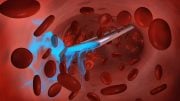Could our sleep patterns really affect our risk of disease?
Are you a night owl or an early bird? Our daily routines of activity and sleep might affect our chances of developing illnesses like type 2 diabetes and heart disease. A recent study published in the journal Experimental Physiology discovered that wake/sleep cycles modify our body’s preference for energy sources and cause metabolic differences.
According to the study, those who stay up later have a decreased ability to burn fat for energy, which means that fats may accumulate in the body and raise the risk of type 2 diabetes and cardiovascular disease.
The metabolic differences are related to how efficiently each group can utilize insulin to promote glucose uptake by cells for storage and energy consumption. Early birds, or those who like to be active in the morning, depend more on fat as a source of energy and are more active throughout the day with greater levels of aerobic fitness than “night owls.” Conversely, “night owls” (those who like to be active later in the day and at night) use less fat for energy both at rest and during exercise.
Researchers from Rutgers University, New Jersey, USA classified participants (n=51) into two groups (early and late) based on their ‘chronotype’ – our natural propensity to seek activity and sleep at different times. They used advanced imaging to assess body mass and body composition, as well as insulin sensitivity and breath samples to measure fat and carbohydrate metabolism.
Participants were monitored for a week to assess their activity patterns across the day. They ate a calorie and nutrition-controlled diet and had to fast overnight to minimize the dietary impact on the results. To study fuel preference, they were tested while at rest before completing two 15-minute bouts of exercise: one moderate and one high-intensity session on a treadmill. Aerobic fitness levels were tested through an incline challenge where the incline was raised 2.5% every two minutes until the participant reached a point of exhaustion.
Researchers found that early birds use more fat for energy at both rest and during exercise than night owls. Early birds were also more insulin sensitive. Night owls, on the other hand, are insulin resistant, meaning their bodies require more insulin to lower blood glucose levels, and their bodies favored carbohydrates as an energy source over fats.
This group’s impaired ability to respond to insulin to promote fuel use can be harmful as it indicates a greater risk of type 2 diabetes and/or heart disease. The cause for this shift in metabolic preference between early birds and night owls is yet unknown and needs further investigation.
Senior author Professor Steven Malin, Rutgers University, New Jersey, USA said: “The differences in fat metabolism between ‘early birds’ and ‘night owls’ shows that our body’s circadian rhythm (wake/sleep cycle) could affect how our bodies use insulin. A sensitive or impaired ability to respond to the insulin hormone has major implications for our health. This observation advances our understanding of how our body’s circadian rhythms impact our health. Because chronotype appears to impact our metabolism and hormone action, we suggest that chronotype could be used as a factor to predict an individual’s disease risk.”
He continues, “We also found that early birds are more physically active and have higher fitness levels than night owls who are more sedentary throughout the day. Further research is needed to examine the link between chronotype, exercise, and metabolic adaptation to identify whether exercising earlier in the day has greater health benefits.”
Reference: “Early chronotype with metabolic syndrome favours resting and exercise fat oxidation in relation to insulin-stimulated non-oxidative glucose disposal” by Steven K. Malin, Mary-Margaret E. Remchak, Anthony J. Smith, Tristan J. Ragland, Emily M. Heiston and Udeyvir Cheema, 19 September 2022, Experimental Physiology.
DOI: 10.1113/EP090613










Be the first to comment on "“Night Owls” Have a Decreased Ability To Burn Fat and an Increased Risk of Heart Disease"